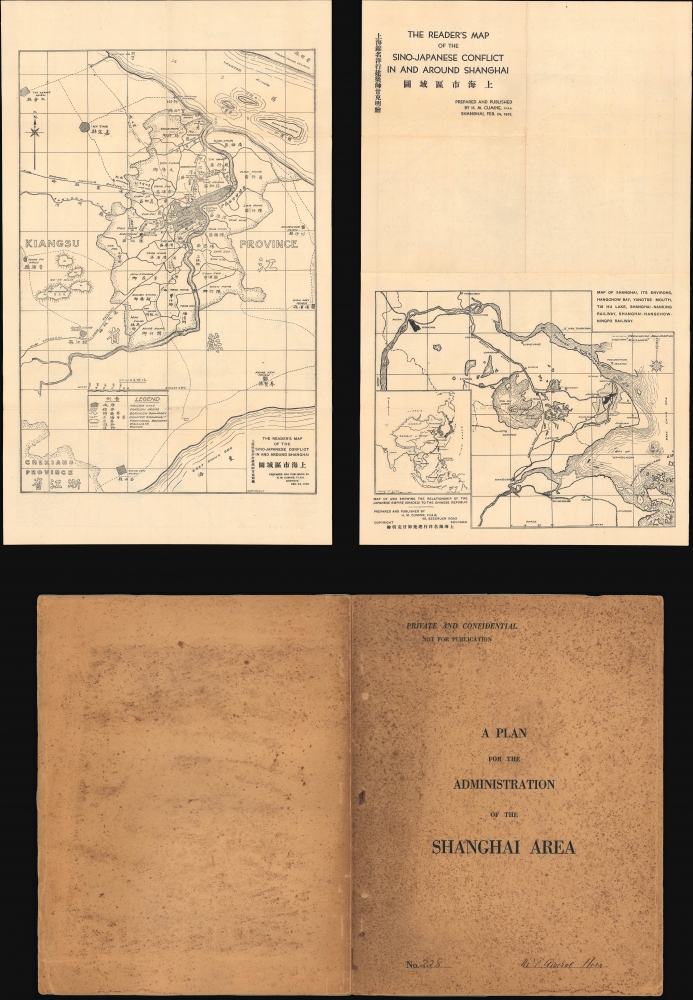Digital Image: 1932 Cumine Proposal for Demilitarized International Zone, Shanghai
ShanghaiPlan-cuminehm-1932_d
Title
1932 (dated) 20.75 x 14 in (52.705 x 35.56 cm) 1 : 165000
Description
FOR THE ORIGINAL ANTIQUE MAP, WITH HISTORICAL ANALYSIS, CLICK HERE.
Digital Map Information
Geographicus maintains an archive of high-resolution rare map scans. We scan our maps at 300 DPI or higher, with newer images being 600 DPI, (either TIFF or JPEG, depending on when the scan was done) which is most cases in suitable for enlargement and printing.
Delivery
Once you purchase our digital scan service, you will receive a download link via email - usually within seconds. Digital orders are delivered as ZIP files, an industry standard file compression protocol that any computer should be able to unpack. Some of our files are very large, and can take some time to download. Most files are saved into your computer's 'Downloads' folder. All delivery is electronic. No physical product is shipped.
Credit and Scope of Use
You can use your digial image any way you want! Our digital images are unrestricted by copyright and can be used, modified, and published freely. The textual description that accompanies the original antique map is not included in the sale of digital images and remains protected by copyright. That said, we put significant care and effort into scanning and editing these maps, and we’d appreciate a credit when possible. Should you wish to credit us, please use the following credit line:
Courtesy of Geographicus Rare Antique Maps (https://www.geographicus.com).
How Large Can I Print?
In general, at 300 DPI, you should at least be able to double the size of the actual image, more so with our 600 DPI images. So, if the original was 10 x 12 inches, you can print at 20 x 24 inches, without quality loss. If your display requirements can accommodate some loss in image quality, you can make it even larger. That being said, no quality of scan will allow you to blow up at 10 x 12 inch map to wall size without significant quality loss. For more information, it is best consult a printer or reprographics specialist.
Refunds
If the high resolution image you ordered is unavailable, we will fully refund your purchase. Otherwise, digital images scans are a service, not a tangible product, and cannot be returned or refunded once the download link is used.
Cartographer
Henry Monsel Cumine (甘克明; July 7, 1882 - July 20, 1951) was a prominent Scottish-Chinese architect, real estate developer, cartographer, and newspaper publisher in Shanghai in the early 20th century. He was often erroneously referred to as Irish in contemporary documents, but his father was Scottish and his mother Chinese. Cumine and his wife Winifred Greaves (also Eurasian or mixed-race) had seven children, one of whom, Eric, also became a prominent architect himself and racing enthusiast discussed in James Carter's 2020 book Champions Day: The End of Old Shanghai. Despite a strong affinity for his Scottish roots, H. M. Cumine was born in Shanghai and spoke Mandarin, Shanghainese, and Cantonese in addition to English, no doubt an asset in his business dealings. As a youth, he studied architecture in the offices of the Shanghai Municipal Council and worked on several public projects, as well as teaching at the Tong Shan Engineering and Mining College and working as an editor for an English-language newspaper in Hankow (now Wuhan). In 1901, at the age of 21, he founded the China Land and Building Company (上海錦名洋行), quickly establishing the company as one of the main architectural and real estate firms in the fast-growing city. He was soon considered a leading expert of the time on the complex land regulations of Shanghai. Cumine amassed a tremendous fortune and built an impressive 16-room mansion known as the Ferryhill House in the French Concession. Continuing his earlier experience with newspapers, Cumine bought the Shanghai Mercury, one of the main English dailies in Shanghai, in 1928. In 1938, he either launched or bought a recently-launched Chinese-language paper, the Wenhui bao (文匯報), known in English as The Standard. Created in the wake of Japan's occupation of the Chinese-administered parts of Shanghai, the paper quickly developed a reputation as a safe haven for patriotic Chinese writers to rail against the Japanese invaders. Cumine's involvement with the paper seems to have been short-lived, and over time it became a leading left-wing paper aligned with the Chinese Communist Party, acting as their 'voice' in Hong Kong, especially in the years before the 1997 handover of sovereignty. In any event, Cumine was not poised to do well financially or politically under Japanese occupation and his family relocated to Hong Kong during the Second Sino-Japanese War. More by this mapmaker...


